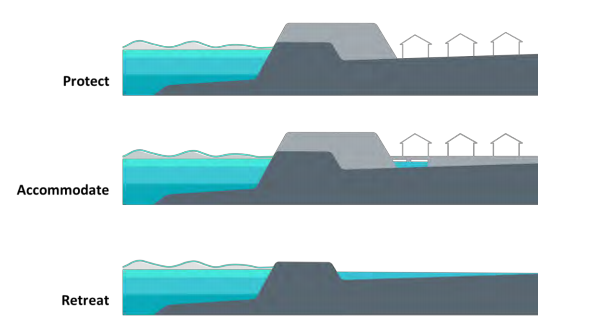Understanding and Assessing Impacts
Surrey’s coastal floodplain makes up about 20% of Surrey’s entire land area. This large, low-lying area stretches from Boundary Bay and Mud Bay along the Nicomekl and Serpentine Rivers towards Cloverdale and Newton. The floodplain also includes the Campbell River/Semiahmoo Bay area near White Rock and Semiahmoo First Nation. As a natural floodplain, the area has regularly experienced some coastal flooding over the years from high tides and storm surges, along with river floods which are typically caused by rainstorms and snow melt but can also be influenced by high tides and storm surges. The two principal causes of increased flooding in Surrey’s coastal floodplain are 1. sea level rise and 2. increased magnitude and intensity of rain – both a result of climate change. The current climatic risks within the CFAS planning area include risks to communities and people, local parks and environment, the local and regional economy, and infrastructure.
The City of Surrey’s CFAS is focused on evaluating the impact and effectiveness of potential large-scale adaptation actions that could be applied to the entire floodplain area. Within the Mud Bay area, there are several infrastructure assets in operation that are vulnerable to the effects of climate change. These include transportation, utility, flood control, and marine infrastructure with local, regional, provincial, national, and international significance. In recognition of this, the City of Surrey initiated the ICFAA process, focusing on a subsection of the Surrey floodplain west of 152 Street. This localized study area was selected because of the number of critical infrastructure assets within it, and because it is the area which is most likely to be affected by future flooding events. The ICFAA was structured as a standalone project, with its own reporting, yet was integrated into the CFAS process. Outcomes from the CFAS process fed into the ICFAA process, and then results of the ICFAA analyses helped to support the progression of the CFAS.

